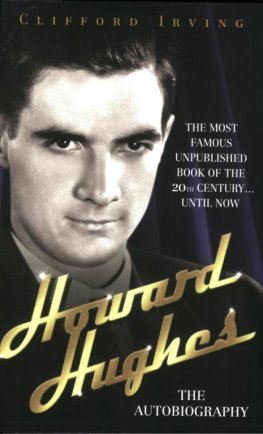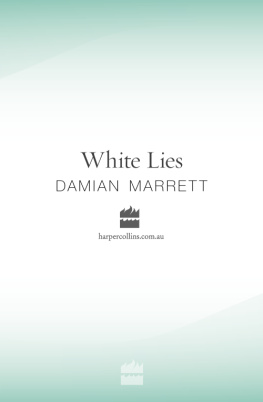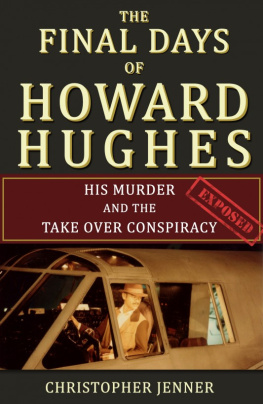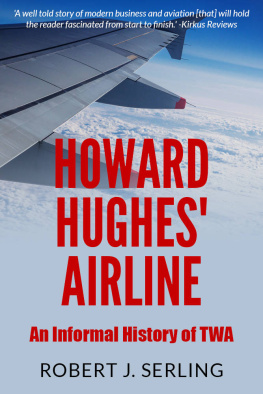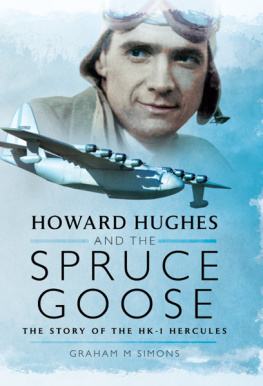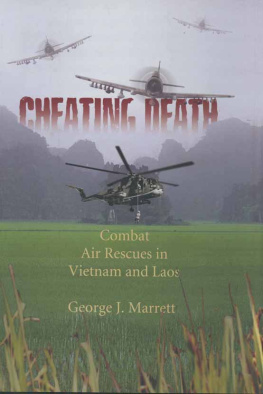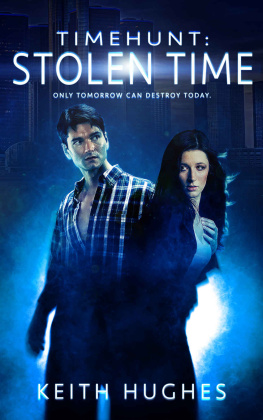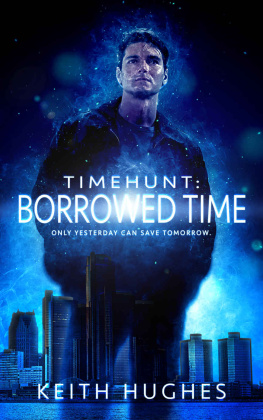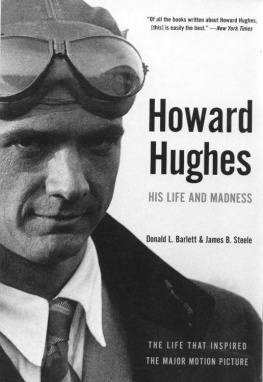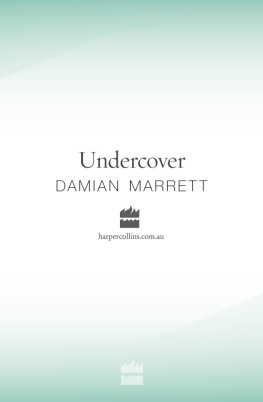

Naval Institute Press
291 Wood Road
Annapolis, MD 21402
2004 by George J. Marrett
All rights reserved. No part of this book may be reproduced or utilized in any form or by any means, electronic or mechanical, including photocopying and recording, or by any information storage and retrieval system, without permission in writing from the publisher.
First Naval Institute Press paperback edition published in 2016.
ISBN: 978-1-68247-037-4 (eBook)
The Library of Congress has cataloged the hardcover edition as follows: Marrett, George J.
Howard Hughes: aviator / George J. Marrett.
p. cm.
Includes bibliographical references.
1. Hughes, Howard, 19051976. 2. MillionairesUnited StatesBiography. 3. Air pilotsUnited StatesBiography. I. Title.
CT275.H6678M37 2004
629.13092dc22
2004014324

 Print editions meet the requirements of ANSI/NISO z39.48-1992
Print editions meet the requirements of ANSI/NISO z39.48-1992
(Permanence of Paper).
24 23 22 21 20 19 18 17 16 9 8 7 6 5 4 3 2 1
First printing
To Chal Bowen, Bruce Burk, Jack Real, and
Gus SeidelHoward Hughess best friends
who encouraged me to write the true flying story of the Man
Table of Contents
Guide
CONTENTS
S PECIAL THANKS and recognition go to my wife, Jan, for her support of my writing and for her editing of this book. She has been my copilot for forty-six years and, as she did with my first book, has provided love, encouragement, and helpful suggestions.
To my older son, Randy, thanks for encouraging me to write about my aviation experiences and to record my history for our family.
To my younger son, Scott, who enjoys nothing more than a well-told story, thanks for reading and reviewing these words.
I am deeply grateful to my father, George Rice Marrett, who taught me the value of hard work and encouraged me to be honest and faithful to Hughes Aircraft Company, where I was employed for twenty years. He worked for just one firm, National Cash Register Company, for all his forty-nine years of employment.
To my mother, Julia Etta (Rachuy) Marrett, who at ninety-four still has a wonderful memorythanks, Mom, for reading my writing and having faith that it could be turned into a book.
To Mark Gatlin, director of Naval Institute Press, go my thanks for being the acquisition editor of my first book, Cheating Death. Mark read my huge Howard Hughes manuscript and saw two books rather than one. Hence, Howard Hughes: Aviator will be followed by another book published by Naval Institute Press that documents my personal flight test experiences at Hughes Aircraft Company. Mark is a true professional who brings out the best in me.
My thanks also go to William Lummis, cousin of Howard Hughes and executor of his estate, for writing a cover quote for this book. Mr. Lummis was nine years old the first and only time he saw Howard Hughes and always wondered about his life as a pilot. Now the story has been told.
Copy editor John Raymond has again turned my pilot-talk manuscript into an easily readable story. He continues to perform magic on my fragmented writing style.
Special appreciation goes to Katy Meigs for reading my manuscript and making valuable editorial suggestions.
Charles Barton, author of Howard Hughes and His Flying Boat, allowed me to read and use unpublished portions of his interviews with people who flew and worked for Howard Hughes. Barton is the ultimate authority on the HK-1 Hercules. Katherine Huit, Director of Collections at the Evergreen Aviation Museum in McMinnville, Oregon, made the Barton transcripts available to me to read and use in publication.
My thanks to Evelyn Ludeman, sister of Chris Smith, who put me in contact with his daughter, Carolyn (Smith) Beatson. Carolyn Beatson typed her fathers handwritten manuscript about his experiences at Hughes Aircraft Company and gave me permission to use his stories. Similarly, the daughter of John Seymour, Kathy (Seymour) Paul, gave me permission to quote stories from her father. She also provided me with unsigned memos that Howard Hughes had written to her father as well as photographs and other memorabilia. Steven Shoop, son of Clarence Shoopy Shoop, told me stories about his father and provided photographs. Special appreciation to all of them.
I am grateful to Charlie Evans, who wrote the original screenplay and is one of the producers of the film about Howard Hughes, The Aviator. He has long been interested in the aviation career of Hughes and suggested that my book be published to coincide with the films release in December 2004.
Betty OConnor, retired Lockheed Aircraft Company secretary, is a long-time admirer and supporter of the legendary Jack Real. She has helped Jack keep his personal records in order and assisted in his writing about Howard Hughes.
My thanks go to Obbie Atkinson and A1 Shade, two of the founders of the Estrella Warbird Museum in Paso Robles, California. Both are dedicated aviators and military veterans who have encouraged me to write and who support my present flying.
I especially want to thank the following individuals, some of whom provided photographs, some of whom connected me with other people who had information on Howard Hughes, and some of whom kindly agreed to be interviewed for this publication: Harlan Armitage, Neal Austin, Charles Barton, Harley Beard, Carolyn (Smith) Beatson, Tony Blackman, John Blandford, Chal Bowen, Bruce Burk, John Chassels, Merle Coffee, John Costa, Robert M. DeHaven, Harry Dugan, John Foster, Julia Foster, Mike Glenn, Duane Johnson, Kenneth Kirk, Jim Kirkpatrick, Johnny Knebel, Charles McDaniel, Charles Mercer, Gale Moore, Dale Mumford, Kathy (Seymour) Paul, Vern Peterson, Jack Real, Don Rogers, Gus Seidel, Steven Shoop, Lou Tyler, Lou Wallick, Gene Whigham, Jim White, and Brien Wygle.
Lastly, I would like to recognize my two grandsons, Tyler Cristian Marrett, twelve, and Zachary Bryce Marrett, ten. Zachary asked me, Grampa, will we be in your next book?
The answer to his question is yes, with hope and prayers that my writing will encourage them to someday put their life experiences in print.
ERRATA

T HE FIRST thing that caught my attention was the whispering. Sometimes whispering can seem louder than the spoken word, especially when everyone is taking part. My wife, Jan, came over to me and spoke quietly in my ear. The man standing in the corner, she said, was with Howard Hughes when he died six months ago.
It was the fall of 1976 and I was attending the annual symposium of the Society of Experimental Test Pilots (SETP). We were standing in the Hughes Aircraft Company hospitality suite of the Beverly Hilton Hotel in downtown Beverly Hills, California, surrounded by luxury and elegance. The suite was on the seventh floor, and the balcony had a commanding view of Los Angeles and the Hollywood Hills. I was a Hughes test pilot, and my wife and I, along with the other pilots and their spouses, were expected to greet visitors when they arrived.


